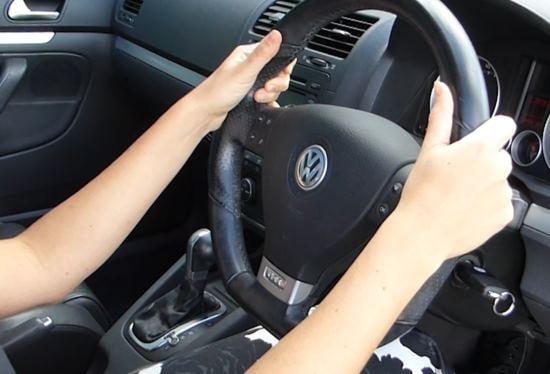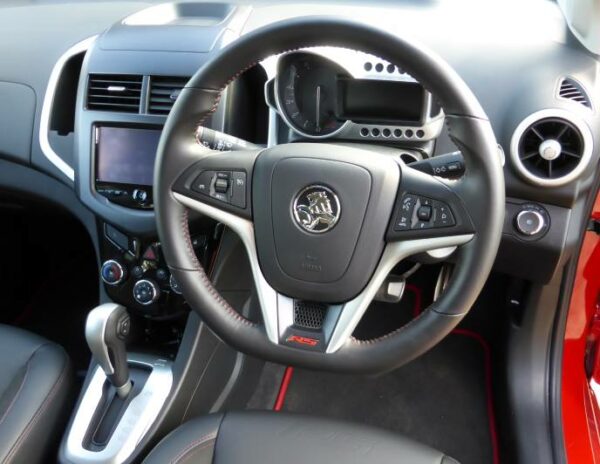
Preferred hand position when driving in a straight line or reversing
When driving forwards, the preferred position for your hands is at the quarter-to-three position with each hand either side of the steering wheel. Some wheels make this easy to find as they are contoured for gripping the wheel in the right position, with a slightly wider area to rest your thumbs. If your arms get tired you can drop to the twenty-to-five position, but you don’t have quite as much control.

It’s best not to wrap your thumbs all the way around the wheel; if the wheel is suddenly jerked one way or the other, e.g. you hit something, it can break your thumbs.
When driving backwards, the best position is right hand on the top of the steering wheel and left hand at 8 o’clock. This gives you the most flexibility to turn to look out of the rear window. If you’re driving a truck with no rear window, use the driving forwards position.
Preferred hand motion when turning while driving forwards
Crossing your hands can enable you to make a quicker turn, but you have much less control and it’s less efficient. It’s advisable to only use this method when manoeuvring and not when driving on the road. Crossing your hands puts your arm in front of the steering wheel; if the airbag goes off if you hit something, it will break your arm and smash your arm into your face. At low-speed manoeuvring speeds, the airbag won’t go off; they usually deploy at around 25kph or more.
For turns that are not sharp, i.e. slight bends in the road, keep your hands in the driving forwards position and rotate the wheel enough to turn the corner. In this case, your left hand or right hand shouldn’t go beyond the 12 o’clock or 6 o’clock positions.
For corners that require more steering wheel input, use the hand-to-hand technique. When turning to the right, turn the steering wheel clockwise with your left hand until it reaches the 12 o’clock position. Slide your right hand up to meet it at the 12 o’clock position. Release your grip with your left hand as you grip with your right hand and pull the steering wheel down with your right hand until it’s at the 6 o’clock position (assuming you need to turn it that far). To unwind the steering, or to turn left, simply do the opposite – right hand steers anticlockwise, moving to the 12 o’clock position while the left hand slides up to meet it.

